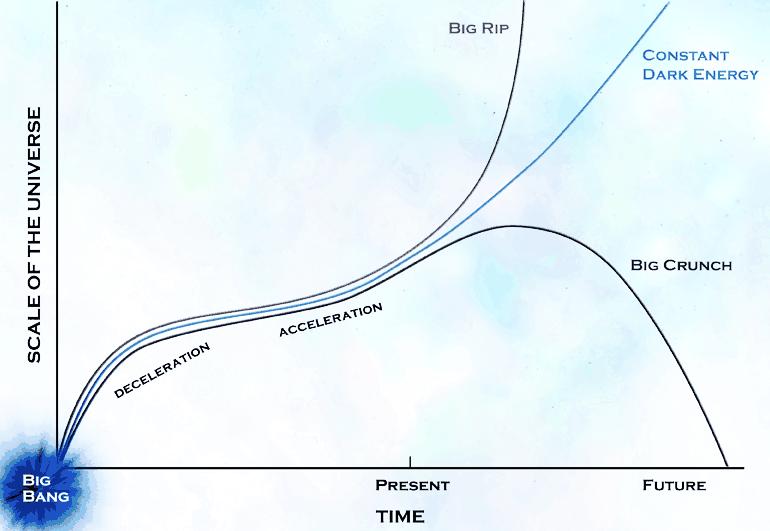Cosmology: How it started.. The Big Bang
 Cosmology is the study of the structure and evolution of the universe.
In 1929, when Edwin Hubble announced that the universe is expanding, he
was the first true cosmologist and opened a door to unexpected discovery.
The Big Bang is the scientific theory that the universe emerged from a tremendously
dense and hot state about 14 billion years ago. The theory is based on the observations
indicating the expansion of space as indicated by the Hubble redshift of distant galaxies.
Cosmology is the study of the structure and evolution of the universe.
In 1929, when Edwin Hubble announced that the universe is expanding, he
was the first true cosmologist and opened a door to unexpected discovery.
The Big Bang is the scientific theory that the universe emerged from a tremendously
dense and hot state about 14 billion years ago. The theory is based on the observations
indicating the expansion of space as indicated by the Hubble redshift of distant galaxies.

While light from a distant galaxy travels across space, space itself, like the balloon, is expanding. The wavelength of the light increases, and its spectrum shifts toward red. This redshifting, caused by the expansion of the unvierse is called, cosmological redshift
The Hubble Constant and the Age of the Universe
The Hubble Constant, which was discussed in the previous slide, is a
measure of the expansion rate of the unverse. If 'inverted', it actually
provides the age since the expansion started. Consider this:
You left your house traveling 60 mph and you are now 60 miles away. How long ago did you start your journey? Easy! One hour ago. For the universe, its travels Ho = 71 km/s per 1 Mega parsec. How long does it take to travel 1 mega parsec at such a speed? This (cancelling distance units of km and mega parsecs) gives 4 x 1017 seconds, or 13.8 billion years of expansion.
 Is the expansion constant?
Is the expansion constant?
Imagine again, you are traveling 60 mph and you are
now 60 miles from your home, but you had been traveling at 120 mph for most
of the trip. You could leave your home a lot more recently and still be 60
miles away by now. Likewise, had you been traveling much slower for most of the trip,
you will have left your house more than an hour ago.
If the Hubble expansion was slowing down, as most astronomers rather assumed it was (because of all the mass in the universe wanting to pull it back together), then the REAL time since the Big Bang was less than 13.8 Billion years ago. If the expansion is speeding up, then the age of the universe is greater than 13.8 billion years ago.
What will ultimately happen?
It depends on two things: 1) the speed and energy of the expansion (which is driving
the universe to expand away for ever) and 2) the density of the matter in the universe
(which is trying to pull all matter together via their mutual gravity). However,
it has recently become apparent that this is not the whole story. There are now two
additional things to consider in answer how the universe will evolve:
- The shape of the Universe (which is effected by the matter within it)
- The presence and evolution of dark energy, a repulsive gravitational force.